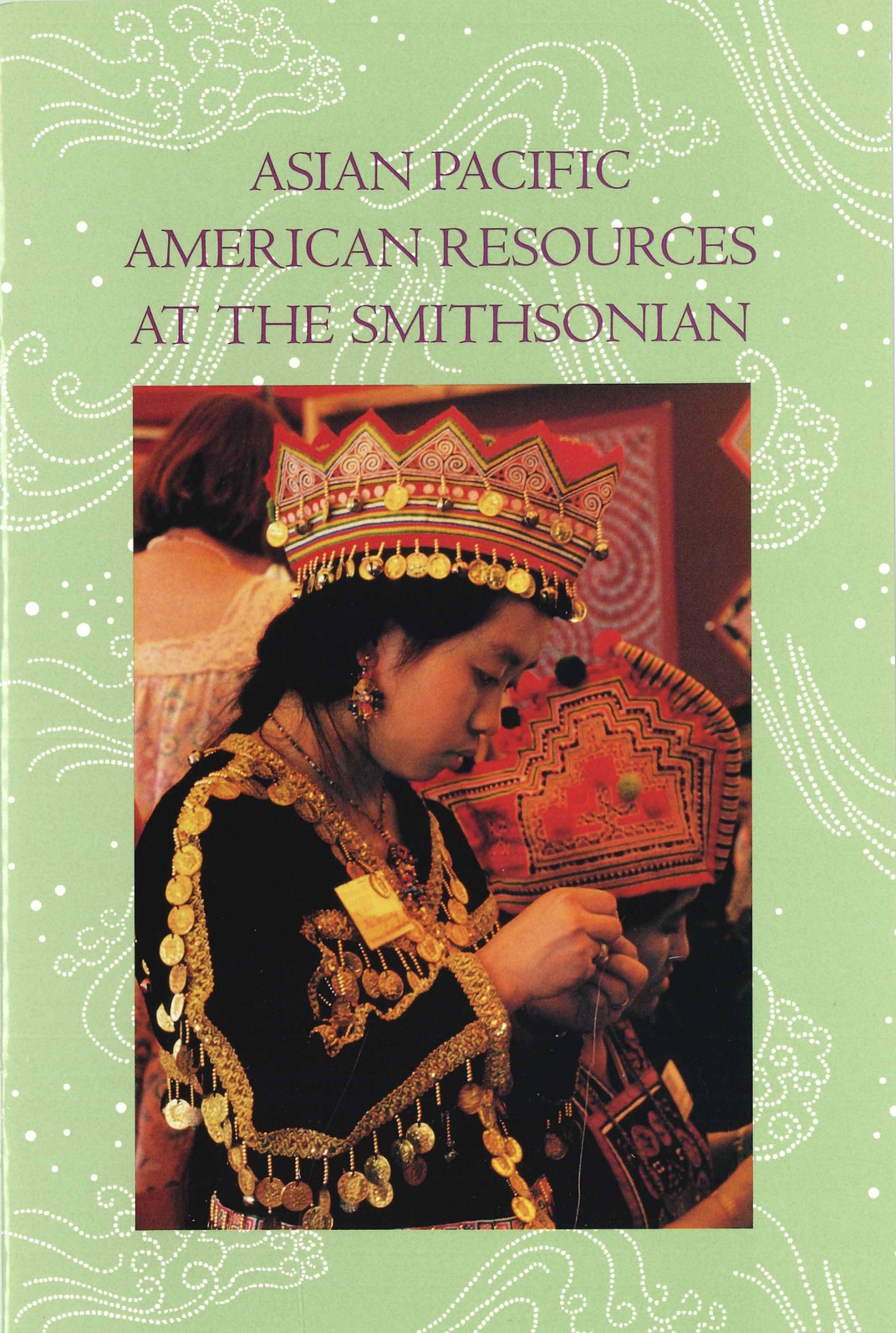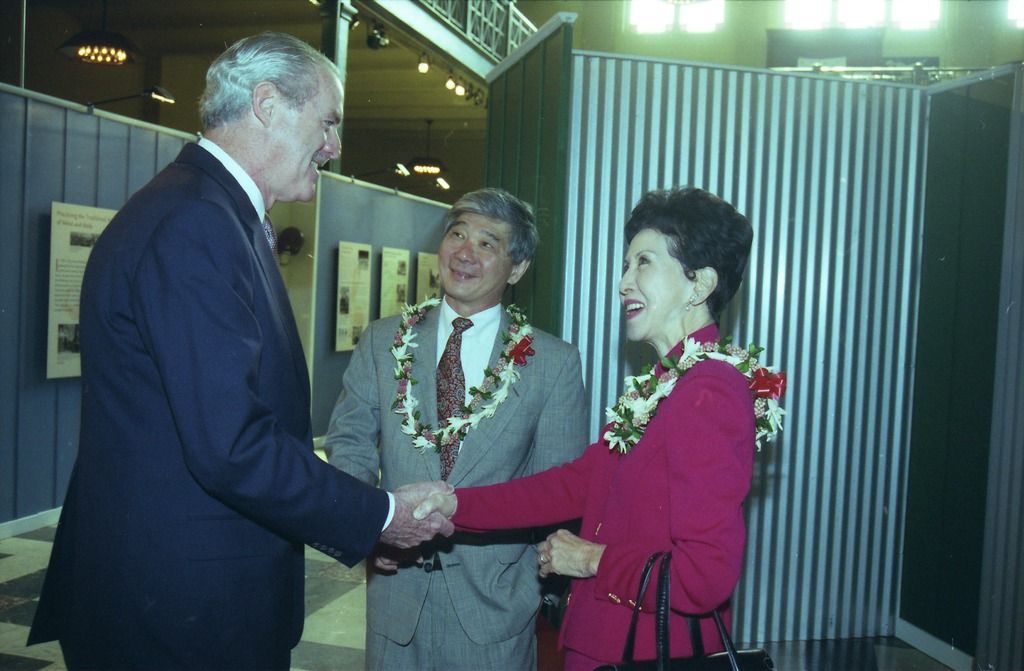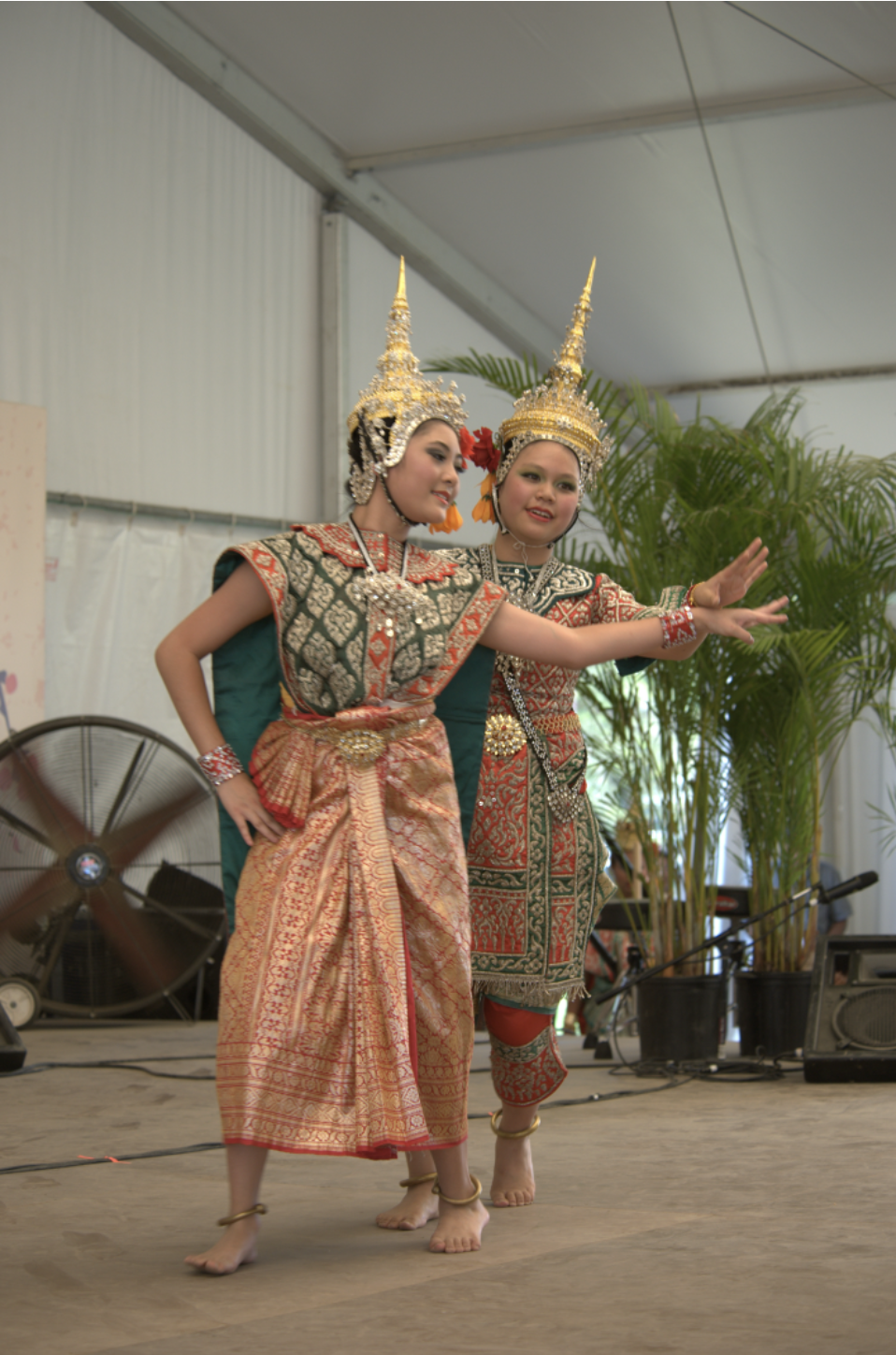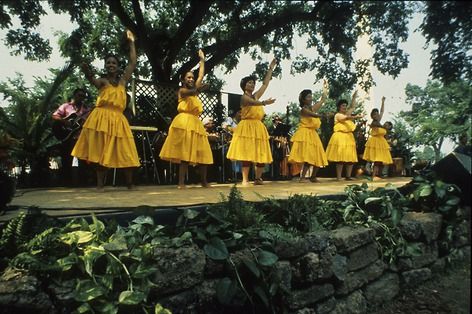SMITHSONIAN LIBRARIES AND ARCHIVES
Exploring the Origins of the Smithsonian Asian Pacific American Center
The Smithsonian Asian Pacific American Center is celebrating its 25th anniversary year. We dig into our records at Smithsonian Institution Archives to trace the center’s origins and highlight some of its early leaders in honor of Asian Pacific American Heritage Month.
/https://tf-cmsv2-smithsonianmag-media.s3.amazonaws.com/filer_public/9f/4f/9f4ffbea-94ed-480b-8eca-d2080874fde9/89-18694-s.jpg)
1996 marked the 150th anniversary of the Smithsonian Institution. It was also in that year that the Office of Public Affairs (OPA) published Asian Pacific American Resources at the Smithsonian. This resource brochure was meant to aid teachers, students, and researchers by providing them with information on Smithsonian collections, databases, publications, fellowships, internships, and more that were of significance to Asian Pacific Americans. The OPA also produced similar brochures on African and African American, Latino, and Native American resources.

The next year, in 1997, the Smithsonian Institution established an advisory group, headed by the Norman Mineta (former U.S. Congressman and the 14th Secretary of Transportation) and tasked to research, examine, and report on the Smithsonian’s progress in covering the nation’s diverse Asian Pacific American communities. The Asian Pacific American National Advisory Group’s final report was released in June 1998 and called for the creation of an Asian Pacific American studies program, now known as the Asian Pacific American Center, at the Smithsonian.
The Program for Asian Pacific American Studies was established thereafter that same year with Franklin S. Odo as the founding director. Its mission from its creation until today is to be a resource to “enrich the American Story with the voices of Asian Pacific Americans.”

One of its earliest actions was to organize, along with the Smithsonian Center for Museums Studies, now known as the Smithsonian Center for Learning and Digital Access, a program for museum professionals: “Diversity, Leadership, and Museums: The Representation of Asian Pacific American Communities.” It was held at the Japanese American National Museum and explored diversity issues in museums, examined current issues affecting Asian Pacific Americans in the museum profession, and emphasized problem-solving strategies, team-building techniques, and communication skills.
The office was later known as the Smithsonian Asian Pacific American Program, and, in 2012, it became the Smithsonian Asian Pacific American Center. Over the years the Center has presented innovative, community-centered museum experiences through the United States and the world. Through their work with communities, their exhibitions, educational programs, digital storytelling, culture labs, and public programs, the Center presents the history, art, and culture of Asian Pacific Americans.

After Odo retired in 2010, Konrad Ng was director from 2011 to 2015. Ng was followed by Lisa Sasaki who started her tenure as director in November 2016. In March 2021, Sasaki was appointed interim director for the Smithsonian American Women’s History Museum and Dr. Theodore S. Gonzalves, curator of Asian Pacific American history at the National Museum of American History was appointed interim director of the Smithsonian Asian Pacific American Center. Yao-Fen You is the current interim director.
The month of May is Asian Pacific American Heritage Month and I would like to share the following statement from Dr. Gonzalves:
As we mark another commemoration of Asian Pacific American Heritage Month, we have to acknowledge how this time feels different. A global pandemic has shaken our communities to the core, revealing long-standing and often unacknowledged inequalities. Our families in Atlanta, Indianapolis, and throughout the nation continue to shoulder the pain of losing loved ones to violence and harassment. Please remember to take time to support each other as we try to make sense of these times. Usually, these month-long events in May have been wonderful ways to gather up our voices to celebrate achievements. We would share songs, food, ritual, and stories. And while this year we grieve, let us also strive to find the humanity in each other. We wish to see the fullness of who we have been, who we are, and who we can still be. We are more than what has been done to us. We bear witness to and participate in calls for racial equality, justice, and much-needed kindness and healing. Our Asian American and Pacific Islander traditions demonstrate unity and care for each other. On behalf of everyone at the Smithsonian Asian Pacific American Center, I invite you to live out these ideals with us not only in May, but throughout the year.
In the past few years, the Center has invited audiences to explore its care package of poems, meditations, and more in response to the COVID-19 outbreak and its repercussions.
Related Resources
- Smithsonian Asian Pacific American Center
- Learning Together During challenging Times, Smithsonian Asian Pacific American Center
- We are not a stereotype: Breaking Down Asian Pacific American Bias, Smithsonian Asian Pacific American Center
- Our Stories: Presenting and Preserving Native Hawaiian and Pacific Islander Stories, Smithsonian Asian Pacific American Center
Related Collections
- Smithsonian Asian Pacific American Center related collections at the Smithsonian Institution Archives
- Asian American Pacific Islander collections – Smithsonian Transcription Center
- Asian American and Pacific Islander Heritage in the Collections – Smithsonian Institution

